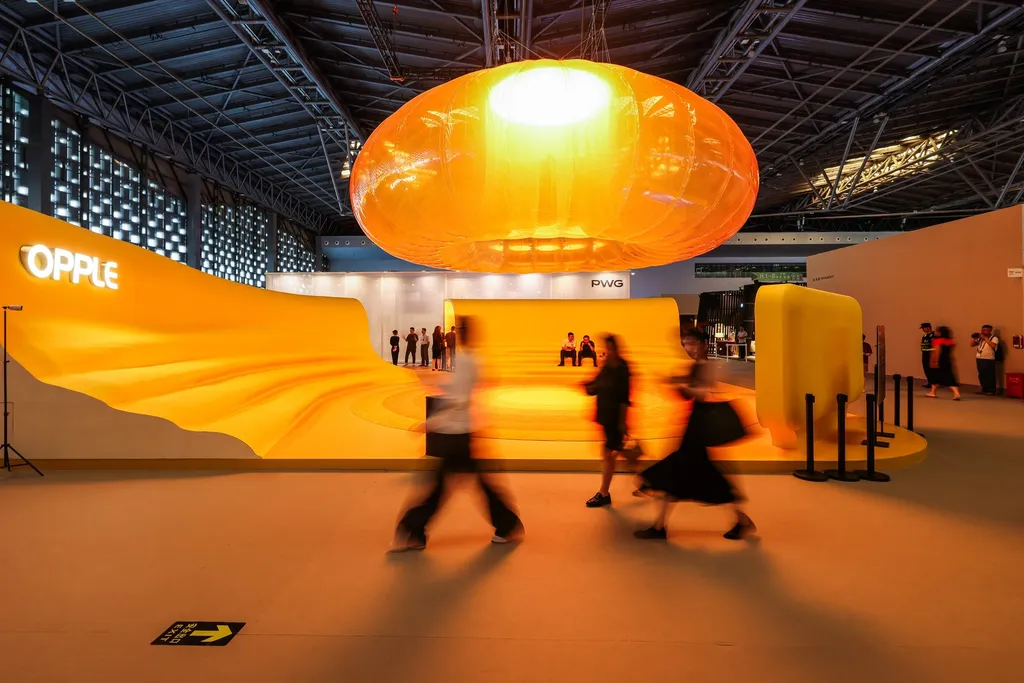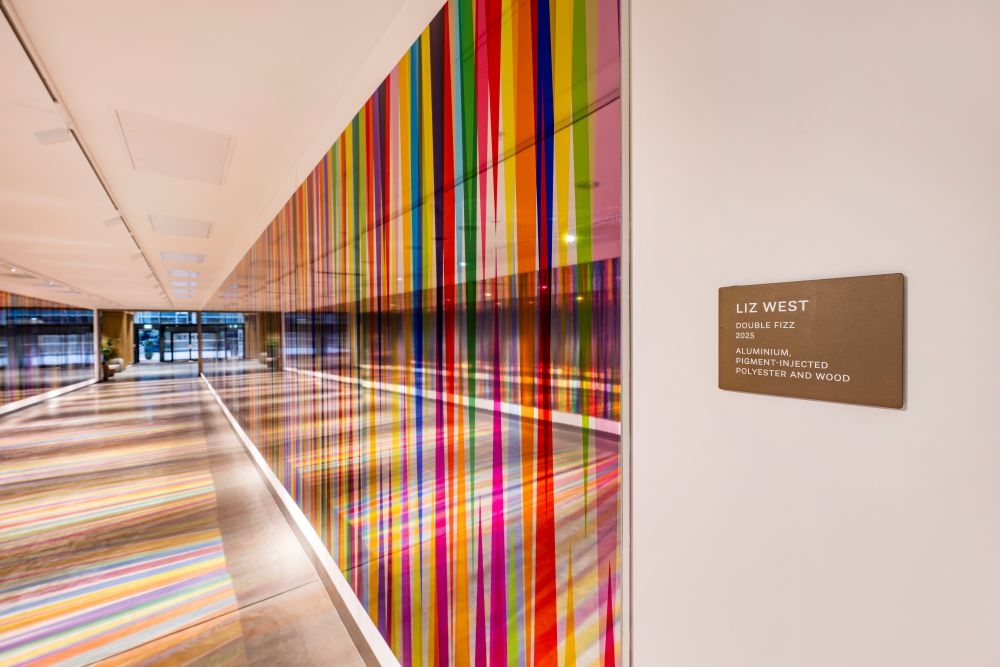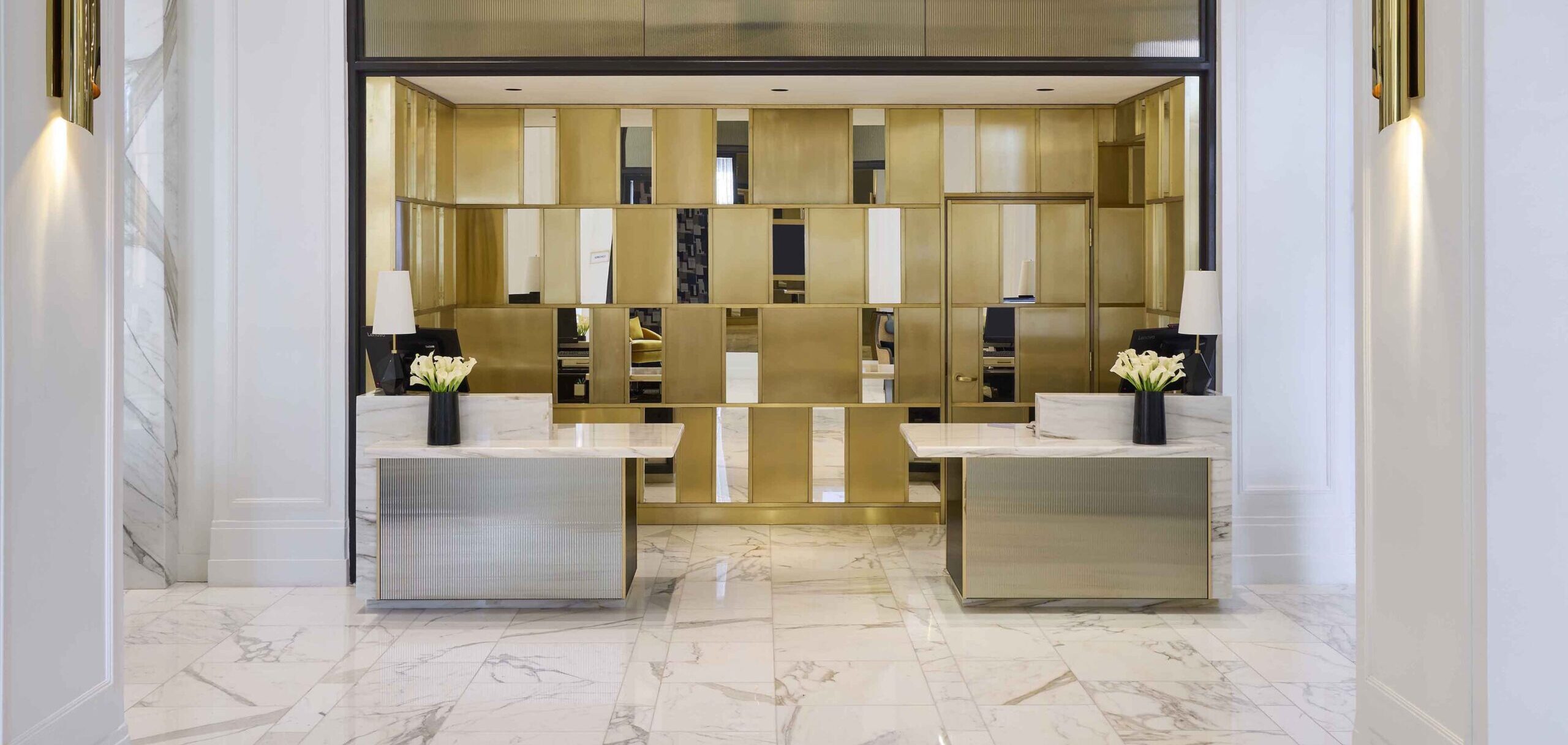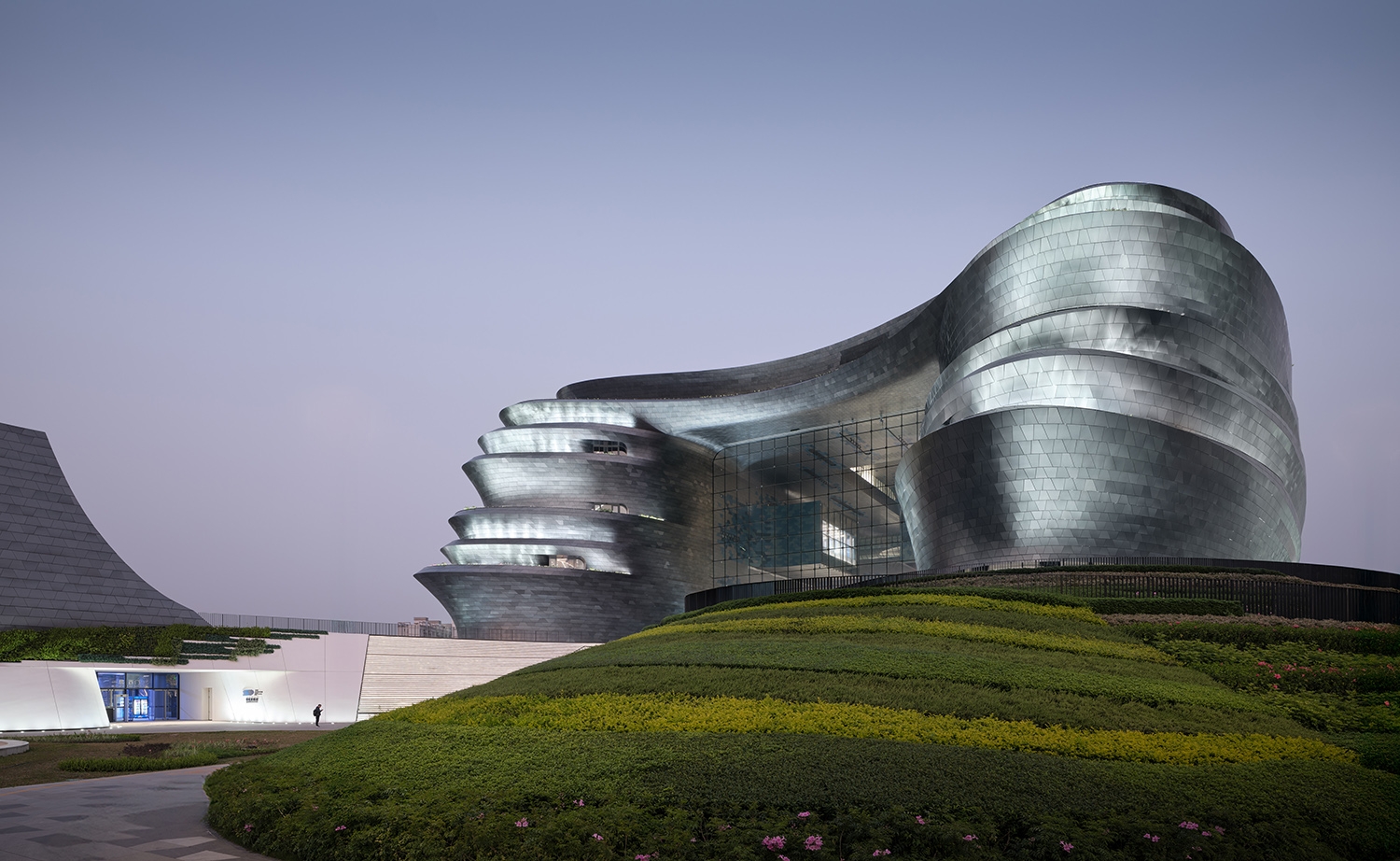Situated on a peninsula with a panoramic view over Lake Catchacoma, Canada, this cottage is a retreat like nothing you have seen before. Designed by Dubbeldam Architecture + Design, this one-story cottage coexists with the opening of a mature forest where there used to be another structure.
Designed for an extended family of three generations, the cottage’s three volumes function as discrete wings, unified beneath a single roof with steeply sloped rooflines. Additionally, a central gathering space includes the living and dining rooms, a kitchen, and a loft space.
The family and guest bedrooms are situated in their respective wings. The cottage has 6 bedrooms, 2 bathrooms, and a family room in a footprint of 205 square meters. The goal of this space is to emphasize socializing and shared experiences in the cottage.
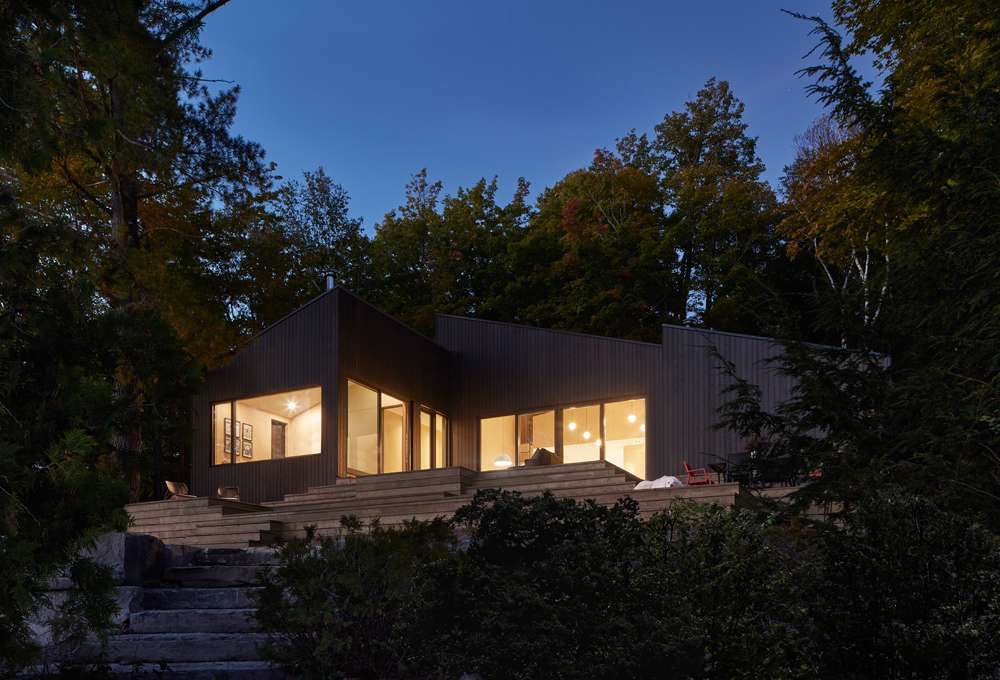
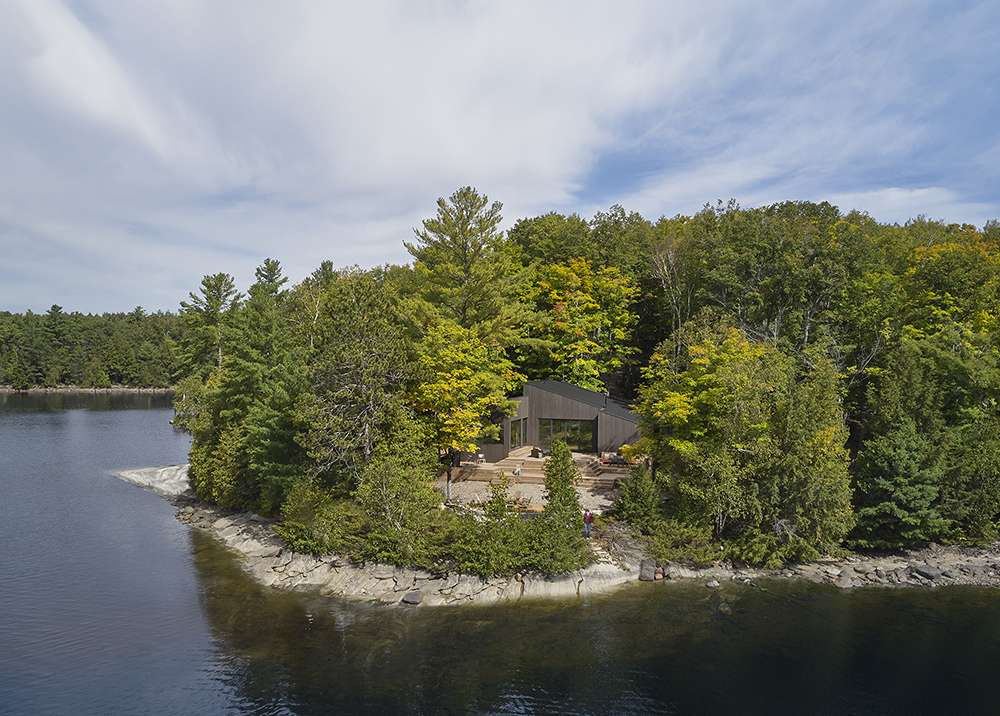
Steeply sloped rooflines articulate the three volumes. Each volume is situated at a different floor height following the site’s natural grade while being connected by a central core that opens up views between them.
To sustain a continuous connection to the landscape, the design approach minimizes visual and physical barriers between interior and exterior spaces to enhance the enjoyment of the cottage experience.
Views and access to the exterior are featured along every axis. Immediately upon entry, a large glass sliding door opens up to views of the lake, and circulation routes culminate in windows to visually connect with the surrounding landscape.
Heather Dubbeldam, Principal of Dubbeldam Architecture + Design
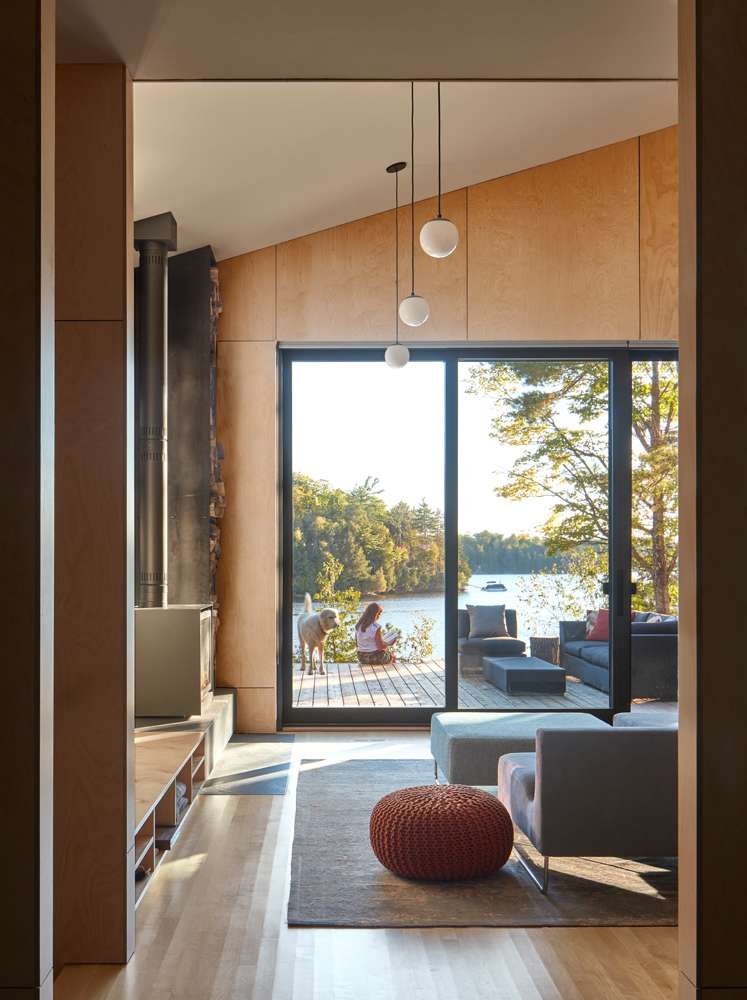
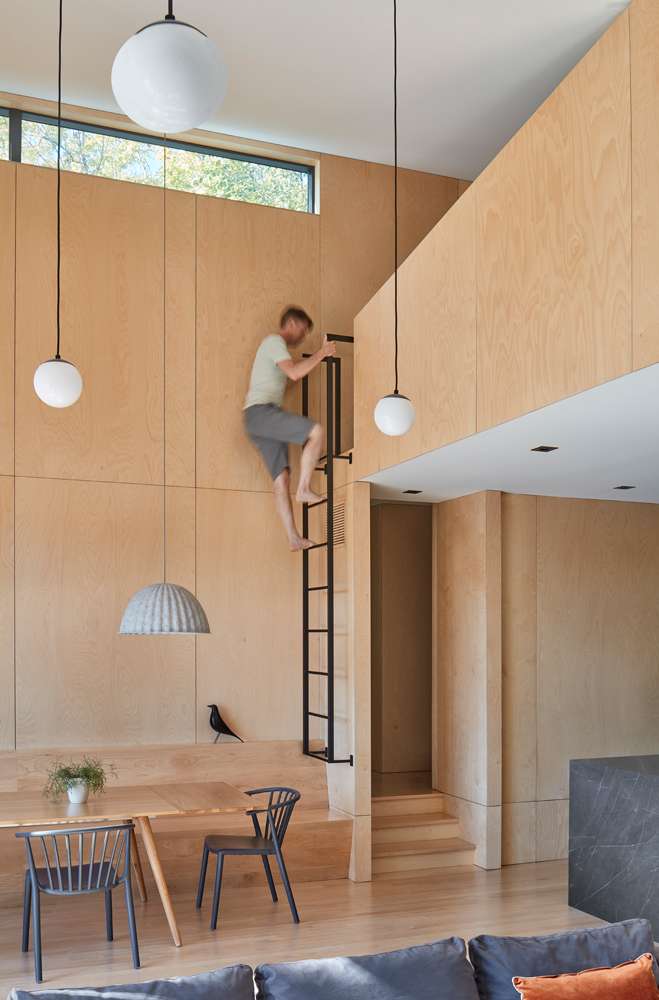
A palette of white and wood with dark accents carries throughout the whole interior. Maple plywood is the main focus of the interior walls, complemented by charcoal grey doors and cabinets. An unfinished cold-rolled steel wall forms a dramatic backdrop to the wood-burning stove and custom firewood storage. At the same time, a reclaimed word wall demarcates the entry foyer.
Grey-stained wood serves as the exterior cladding. It allows the cottage to blend into the landscape with a natural finish. Furthermore, the entry porch appears sculpted from the central volume. This is the case because it is lined with warm red cedar. It also draws attention to the main entrance.
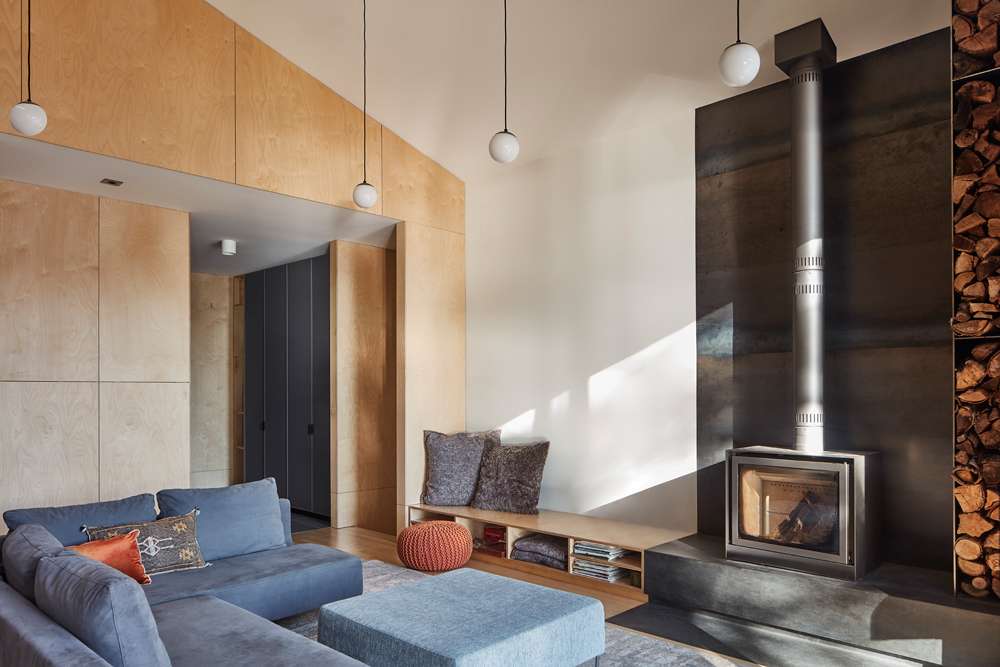
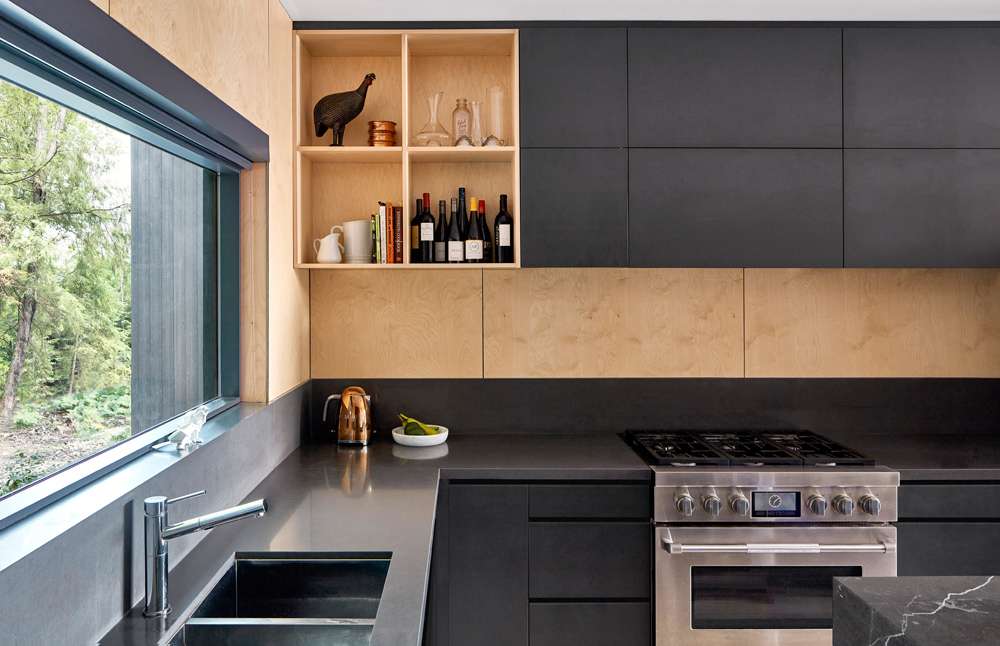
There is an expansive deck that stretches along the cottage’s lakeside for large family gatherings or quiet outdoor relaxation.
Designed to integrate with the natural slope of the site, the deck cascades in multiple tiers toward the water’s edge. This provides space for various outdoor activities.
All in all, Catchacome Cottage showcases a holistic approach to sustainable design. It incorporates both active and passive strategies to implement a more environmentally friendly approach and minimize the carbon footprint. Designed as an all-year retreat, the HVAC systems allow certain zones and wings to be shut down during the winter, reducing energy consumption. The ceilings and the large operable windows further enhance the passive ventilation and natural daylighting. This reduces the reliance on air conditioning and artificial light. Other sustainable features include high-performance glazing, low-flow plumbing, and energy-efficient fixtures and appliances. Last, the dominant construction material is responsibly sourced wood that is Forest Stewardship Council (FSC)-certified.
This cottage brings to our attention a sustainable design that interweaves luxury and comfort. Its thoughtful architecture fosters communal living while maintaining a seamless relationship with the surrounding forest and lake. As an all-year retreat, this design serves as a model for balancing aesthetics and ecological responsibility in contemporary architecture.
Photo credit: Riley Snelling




